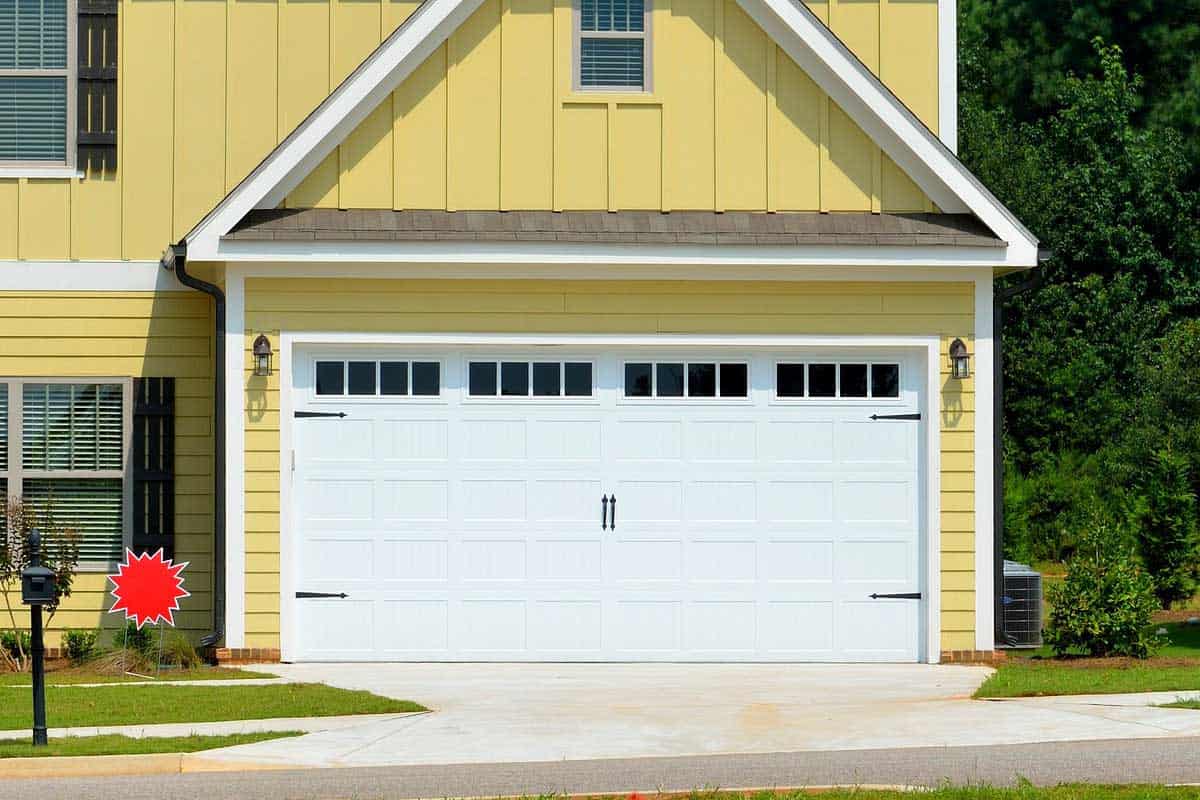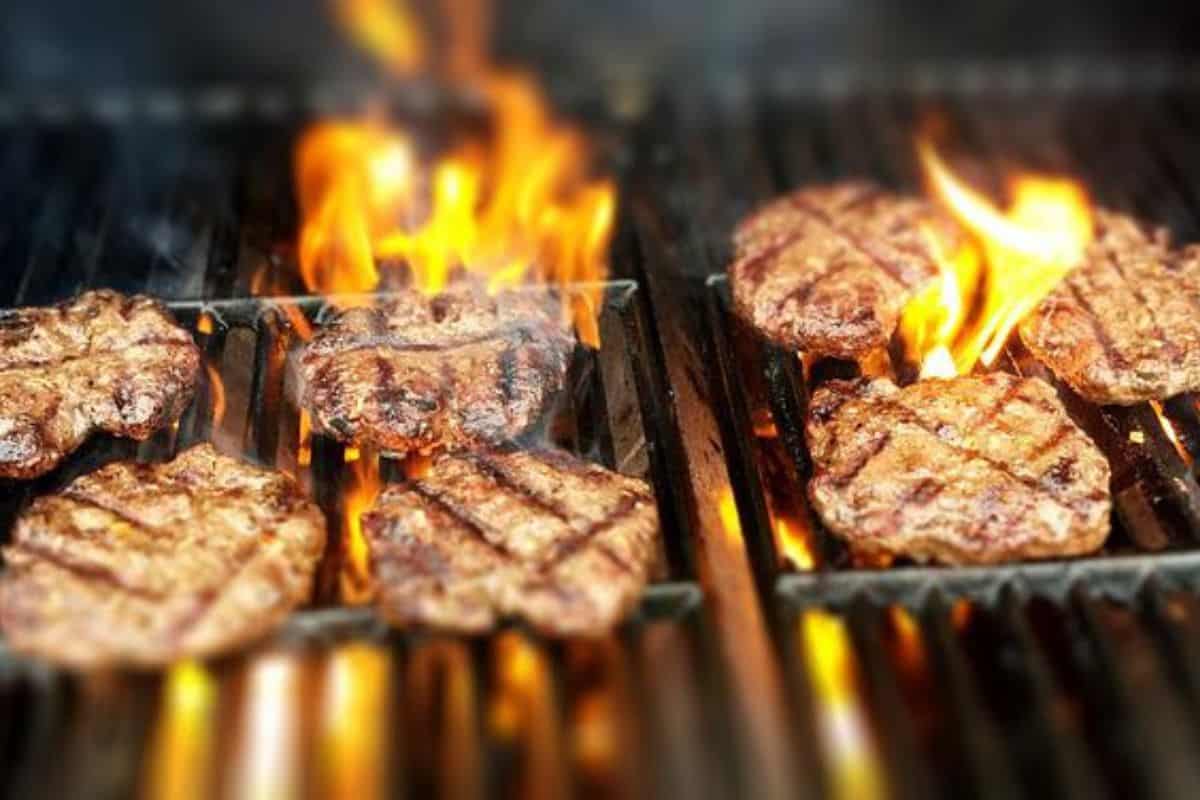This page may contain affiliate links. If you click and buy, we might get a small commission at no cost to you.
Winter weather come with more rainfall and chances of snow, which are not optimal grilling environments. When planning to grill, it’s normal to wonder is it safe to grill in the garage? It would definitely be much easier than battling out the elements outdoors.
But before you start grilling up some meat or vegetables in your garage, read this article first! We’ll cover answers to all your questions about grilling indoors and safe grilling practices.
Is it safe to grill in the garage?
Generally no. It’s not safe to grill in your garage because of the carbon monoxide buildup that occurs from propane, lump coal, or charcoal grills. This odorless gas can kill you or your pet if you’re not careful.
Simply opening up your garage door might not provide enough ventilation to prevent high levels of carbon monoxide buildup. Additionally, for those with an attached garage, the gas could seep into your home.
Grilling in the garage is also a fire hazard, especially if you have any combustible chemicals or materials that easily catch fire, such as paper, nearby. Having said all this, some types of grills can be used indoors and are usually specifically designed to be safe inside. Just don’t roll your outdoor grill into your garage and expect no risk.
Can you use a griddle grill in a garage?
You shouldn’t use a griddle grill, especially if your garage is cramped and has bad ventilation. The safety reasons are similar to using any other regular grill indoors: carbon monoxide build-up and fire hazards.
The only safe option for grilling indoors is to use an electric grill or electric griddle. They don’t produce carbon monoxide or have flare-ups like regular grills do. Although the flavor quality is compromised a little, they are a lightweight and easy to clean up alternative if you really want to grill in your garage.

How do you grill indoors?
Besides purchasing an electric grill or griddle, there are other alternatives that let you grill indoors in your kitchen. Obviously, these options aren’t exactly the same as using an outdoor grill, but they can let you cook tender meat. Examples include grilling with a:
- Standard grill pan
- A reversible griddle pan
- Cast iron pan
- Sous vide
- Tabletop charcoal grills
To add some depth of flavor, you can try using indoor smoking tools that help you infuse in flavors. For example, you can cook with a stovetop kettle smoker on your burner.
How far away should a grill be from house?
For the best safety measures, you should make sure your grill is at least 10 feet from your house unless the manufacturer’s instructions say otherwise. You’ll also want to:
- Have your grill on a stable, flat, and non-flammable platform
- Keep your grill away from porch overhangs and awnings
- Make sure your grill isn’t under overhanging branches
Is it dangerous to grill in cold weather?
No, it isn’t. Despite it being cold outside, you can grill even in the snow. Just make sure you are wearing winter clothes and heat-resistant gloves. Snow gloves are not for grilling and could catch fire if you aren’t careful.
Do note, however, you might need to be a little more patient than usual. Your grill can take longer to reach the right temperature and you might need more fuel to keep the fire going. Depending on how cold or windy it is outside, you’ll need at least 10 extra minutes to preheat your grill.
Can you cook on the grill while it’s raining?
Yes, it’s still possible to grill in the rain. You might need to wear a raincoat and recruit a helping hand to protect the food under an umbrella before you place it on the grill, but it’s not impossible to keep your grilling plans despite unexpected rains. It can also be wise to use your oven to pre-cook some of your meaty items so they don’t have to spend too much time on the grill.
Similar to cold-weather grilling, be prepared for longer times to heat up your grill due to the rain’s cooling effects. You might also need to add more fuel as well to keep the fires going. As tempting as it may be, try to avoid placing your grill under an awning that might catch fire.
How do restaurants grill inside?
A lot of restaurants will use gas grills or salamander broilers that can roast foods and broil steaks to create grilled-like dishes. They also have the budget to purchase products such as indoor charcoal oven grills to grill and bake food with a BBQ finish.
Additionally, as extra safety precautions, restaurants are required to have amazing ventilation and safety measures in place. This includes powerful vent hoods to remove smoke and gas from the kitchen as well as fire suppression systems.
Conclusion
Unless you’re choosing an alternative to a traditional grill or planning to install a powerful vent like restaurants, it’s best not to grill indoors, especially in your garage. The potential carbon monoxide build-up alone can be deadly and not worth the risk. Luckily it’s still possible to grill outdoors even in the cold and rain!



